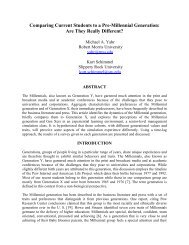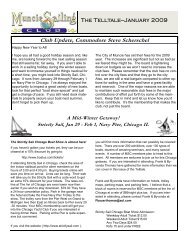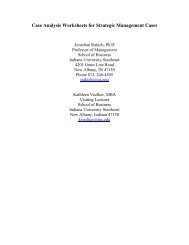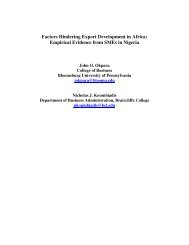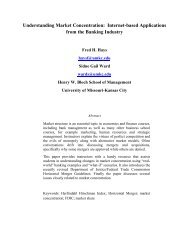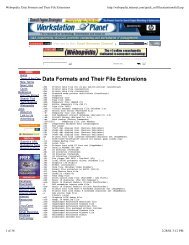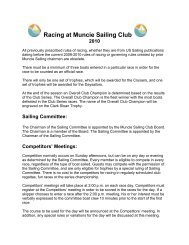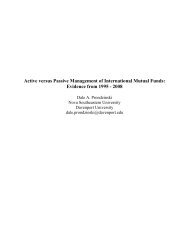Pricing Bank Loans and Deposits: Does Concentration Matter ...
Pricing Bank Loans and Deposits: Does Concentration Matter ...
Pricing Bank Loans and Deposits: Does Concentration Matter ...
You also want an ePaper? Increase the reach of your titles
YUMPU automatically turns print PDFs into web optimized ePapers that Google loves.
<strong>Pricing</strong> <strong>Bank</strong> <strong>Loans</strong> <strong>and</strong> <strong>Deposits</strong>: <strong>Does</strong><strong>Concentration</strong> <strong>Matter</strong> Anymore?BackgroundOne of the important lessons learned in Principles of Economics is the relationshipbetween market concentration <strong>and</strong> the quantity <strong>and</strong> prices of goods <strong>and</strong> services. Studentsare dutifully taught that competitive markets generally result in lower prices <strong>and</strong> greaterquantities <strong>and</strong> choice for consumers compared with imperfectly competitive markets,especially monopoly <strong>and</strong> oligopoly.Historically regulators have embraced antitrust laws such as the Sherman Act (1890) <strong>and</strong>Clayton Act (1914) that address excessive market power conditions that maysubstantially lessen competition or tend to create or promote monopoly. The U.S.Department of Justice <strong>and</strong> the Federal Trade Commission have formulated HorizontalMerger Guidelines (http://www.usdoj.gov/atr/public/guidelines/hmg.htm) to evaluate theprobable impact on market concentration of mergers between firms in the same industryor business.The Federal Reserve System has adopted a similar approach in weighing the potentialanti-competitive consequences of bank mergers under the <strong>Bank</strong> Holding Company Act(1956). The Federal Reserve has historically used concentration ratio analysis along withHerfindahl Hirschman Indices (HHI) to evaluate the potential anti-competitive effects ofbank mergers. [The calculation of HHI <strong>and</strong> comparison benchmarks are discussed later inthis paper]Anecdotal evidence suggests that in the current environment dramatically different levelsof market concentration may be associated with similar prices for banking states. Forexample, based on June 30 th 2007 data, Missouri (HHI=426) was one of the mostcompetitive banking markets in the United States. [Major MSAs within Missouriincluding Kansas City <strong>and</strong> St. Louis are likewise highly competitive] By contrast SouthDakota (HHI=3409) was highly concentrated [The Sioux Falls MSA by comparison ishighly concentrated]. For the same time period, the yield on earning assets in Missouriwas 7.21% while South Dakota was 7.58%, a difference of only 47 basis points or lessthan ½%. Similarly, the cost of funds was 3.31% in Missouri <strong>and</strong> 3.24% in SouthDakota, a difference of only 7 basis points or 7/100%. These small differences are notpredicted by conventional economic theory. We suggest that a possible explanation liesin the increasing pervasiveness of Internet access to banking customers, especially inremote, thinly populated rural areas.Data from the Pew Foundation Internet <strong>and</strong> American Life Project (2003) suggestdramatic increases in both the percentage of households with computers as well as thepercentage with Internet access. In 1998 only 42.6% of consumer households hadcomputers; by 2003 this increased to 62.2%. For the same years the percentage of



